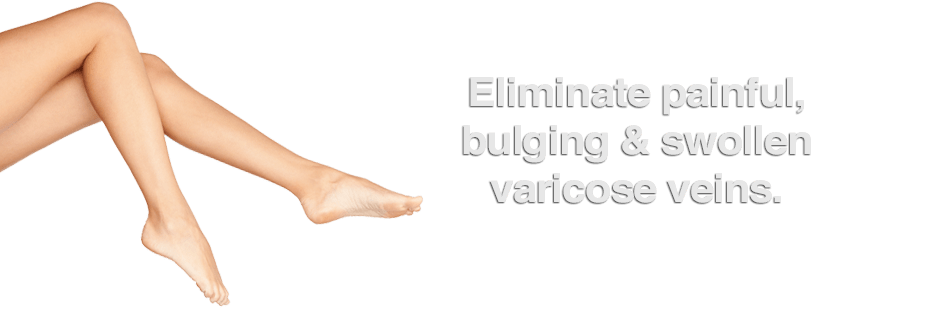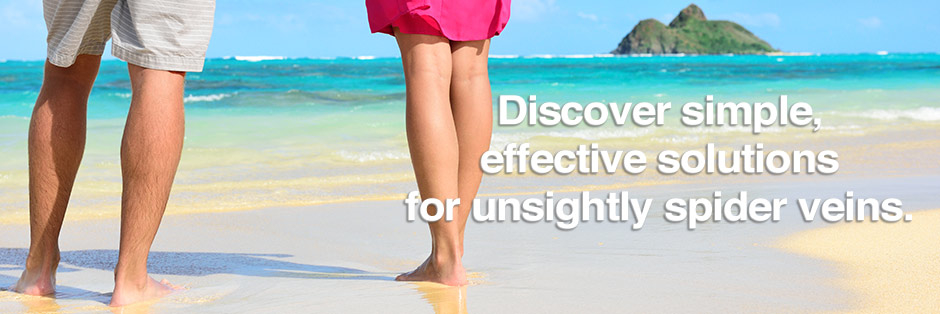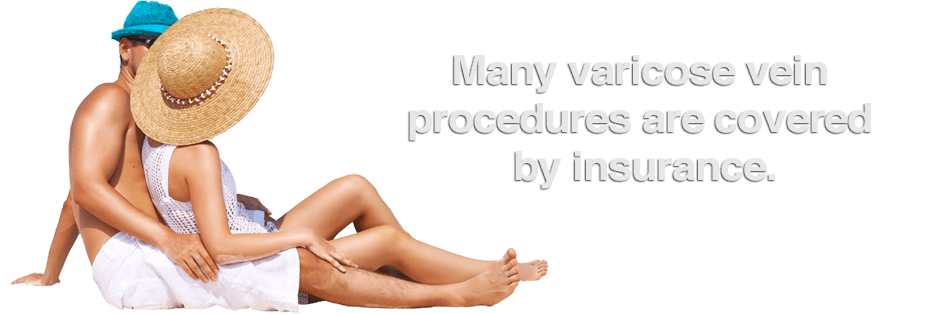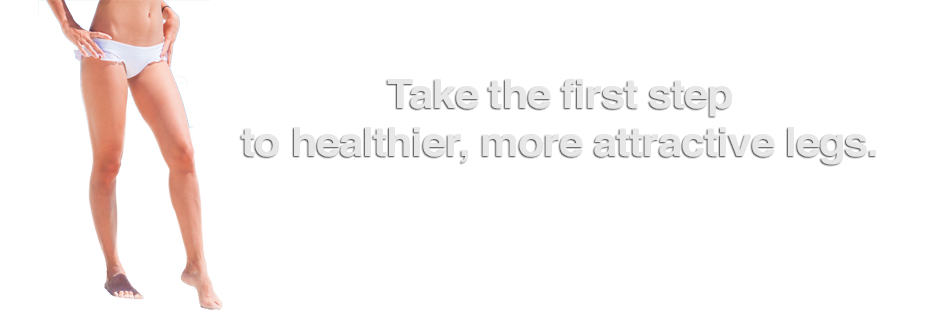Sclerotherapy for Varicose Veins
Effective treatment for varicose veins in patients who have a history of prior vein procedures.
Are you bothered by the appearance of varicose or spider veins on your legs? These unsightly veins can affect your self-confidence and cause discomfort and pain. Fortunately, a nonsurgical treatment called sclerotherapy can effectively address these concerns. Let’s explore the benefits, procedure, recovery, and potential side effects of sclerotherapy.
Not only are varicose veins painful, but they are also often an eyesore for the person who is suffering from them. They can be a tricky condition to treat since everyone’s body reacts differently to them, but sclerotherapy is one of the gold standards that most people are able to get satisfactory results from.
Here are a handful of reasons our office may recommend sclerotherapy for varicose veins:
- It is particularly successful in patients who have not found success in prior vein procedures
- It has a high success rate in the general treatment of varicose veins across a spectrum of case types
- It is a minimally invasive procedure
- The entire process takes less than 30 minutes in most cases
By using patient-specific sclerotherapy techniques that avoid a cookie-cutter approach, the Vein Center of Florida and The Vein Center of South Baldwin can make a big difference in the appearance of your broken veins. If you would like to find more information about how our sclerotherapy treatments can help you, Call 1-800-910-VEIN or request your FREE vein screening today.
Causes and Symptoms of Leg Veins
Before delving into the details of sclerotherapy, let’s explore the causes and symptoms of leg veins. Varicose veins are often a result of weakened or damaged vein valves, which erroneously allow blood to flow in the wrong direction, causing pooling and pressure. This leads to their enlargement and the formation of varicose veins. Spider veins, on the other hand, are smaller, dilated blood vessels closer to the surface of the skin.
Common symptoms associated with leg veins include:
- Visible, bulging veins
- Discoloration or darkening of the skin
- Aching or throbbing sensation in the legs
- Itching or burning in the affected areas
- Restless legs or leg fatigue
What Is Sclerotherapy?
Sclerotherapy is one of the preferred methods of treating varicose veins because of how safe, reliable and impactful the treatment is. It is performed through an injection of a solution that is applied directly into the vein. The goal is simple: destroy the vein. It may sound dangerous, but it is very safe — the body will naturally reroute the blood flow to a less problematic stream.
While it can take a few weeks for the treatment to show its final results, the endgame is a rejuvenated appearance throughout the leg. It’s already a popular procedure performed on countless patients, and it only continues to grow in popularity as people search for ways to rid themselves of troublesome veins.
Historical Use
Sclerotherapy is not a recent medical technique. Sclerotherapy has been used for centuries to treat varicose veins. Ancient Greeks and Romans employed various methods to address vein-related conditions, including herbal remedies and caustic substances. And more recently, sclerotherapy was performed in the early 20th century, to treat varicose veins.
Evolving Techniques
Sclerotherapy techniques have evolved to include different approaches. Traditional sclerotherapy involves injecting a sclerosing agent directly into the vein, while foam sclerotherapy uses a foam mixture of the sclerosing agent which often attains a more complete result.
Cosmetic Benefits
Apart from its medical applications, sclerotherapy is also performed for cosmetic purposes. It can help diminish the appearance of unsightly spider veins, improving the overall aesthetic of the legs or other affected areas. In fact it is the preferred treatment for many experts in the field.
Non-Visible Veins
Sclerotherapy can also treat feeder veins, known as reticular veins, that may be causing symptoms or aesthetic concerns. These veins are often bluish or greenish and may appear as a network or branches under the skin.
Versatility of Sclerotherapy
This adaptable method can address smaller spider and more prominent varicose veins. It is often used to treat broken veins under the skin’s surface as well. In this case, ultrasound guidance (known as echo sclerotherapy) is employed by a vein specialist to locate the vein and administer sclerotherapy.
Advancements in Visualization
With the advancement of technology, ultrasound-guided sclerotherapy has become a valuable tool in treating varicose veins. Ultrasound imaging helps healthcare professionals visualize the veins in real time, ensuring accurate and precise injections.
Risks Associated With Sclerotherapy
Complications are rare with this treatment, but as with any minimally invasive procedure, certain risks exist, such as the potential for post-surgical infection. We will discuss any concerns you may have during your free vein assessment.
Am I a Candidate for Sclerotherapy?
If you are dealing with varicose veins that are causing you pain, aching, swelling, burning or night cramps, or if you would simply like to improve the appearance of your varicose veins, then you may be a good candidate for sclerotherapy treatment.
Pregnancy Considerations
Sclerotherapy is generally not performed on anyone who is pregnant or breastfeeding. Delaying treatment until after childbirth is recommended. Hormonal changes and increased blood volume during pregnancy can affect the appearance of veins and the appearance of some veins may improve on their own after pregnancy.
We also highly recommend that you develop realistic expectations about what sclerotherapy can achieve. Spend plenty of time reviewing before and after images and doing your own research through credible sources. Knowing precisely what you are getting into will prevent any feelings of disappointment or regret caused by unrealistic expectations.
How Should I Prepare for Sclerotherapy?
Before your sclerotherapy procedure, Dr. Jimenez will conduct a thorough examination of your condition, including the examination of any problematic veins. They will also review your medical history and check for any underlying vein conditions.
You should disclose any medical conditions especially those related to blood clots. You will be asked to provide a full list of prescription and over-the-counter medications you take. An ultrasound may be requested so that a more complete image of your veins can be understood.
Once those steps have been completed, Dr. Jimenez will take time speaking with you to best understand your goals for sclerotherapy treatment. He will use all the information gathered and work with you to determine the best treatment plan for your unique condition.
You should avoid applying anything to your legs (including lotion) and refrain from shaving the day before your procedure. Dr. Jimenez will provide you with instructions that gives you the highest probability of success and safety.
What Should I Expect from a Sclerotherapy Procedure?
Sclerotherapy is performed in our office as an outpatient procedure. You will not need to undergo anesthesia. The area that is being treated will be cleaned sterilely.
A fine needle will then be inserted into the targeted vein. A solution designed to block the blood flow through the vein is inserted. Shortly after the solution is injected, the vein will become nothing more than scar tissue and fade. This process is repeated for all troublesome veins that are being treated. Once the injections are complete, you will likely be required to wear compression hose for several days.
What Should I Expect During Sclerotherapy Recovery?
One of the best aspects of this procedure is that there is virtually no recovery or downtime associated with it. You can walk around immediately after the treatment is complete and return directly to your routines and responsibilities. You may decide to take some time off from work, but most of our patients are able to return the same day.
Compression garments are highly recommended and often mandated by your physician since they help prevent excessive swelling and damage to the treated areas.
You should avoid any high impact activities in the short term. This usually takes around two weeks, but it can run longer or shorter depending on your body’s unique recovery process. Prolonged exposure to UV light can create inflammation and dark spots on your skin, so do your best to avoid the sun whenever possible.
Possible side effects following the procedure may include some of the following for certain individuals:
Lumpiness and Hardness
Injected veins, particularly larger ones, may become lumpy and hard in the short term before gradually improving.
Brown Lines or Spots
Brown lines or spots may appear at the injection site. These discolorations gradually fade in most over time.
Redness
Temporary red areas surrounding the injection site may be observed, but they should vanish within a few days.
Mild Allergic Reaction
A mild allergic reaction to the injected solution may occur, resulting in swelling and itching. However, serious reactions are uncommon.
Bruising
Bruising can develop at the injection site and may last several days or weeks before gradually fading.
Neovascularization
As a rare potential side effect, neovascularization may occur. This involves the appearance of tiny blood vessels at the injection sites after treatment which many times is self limiting but can be further treated if need be.
What Can I Expect from Sclerotherapy Treatments?
Overview
You can expect to have noticeable changes in the appearance of your treated veins within three to six weeks for veins of average size, but that number may increase to three or four months for larger veins since it takes longer for them to respond completely. It is unusual for veins that have been treated to come back after treatment, but it is, unfortunately, possible for new broken veins to develop in some cases. These can be treated accordingly. Treating problematic veins on your legs creates a much smoother, more youthful appearance that you will be happy to show off with shorts and dresses.
Multiple Sessions
Sclerotherapy is often performed as a series of treatments rather than a one-time procedure. Many patients require multiple sessions spaced several weeks apart to achieve the most optimal result. The exact number of sessions needed depends on the severity of the veins and the individual’s response to treatment.
Possibility of Repeat Treatment
While sclerotherapy is typically effective in alleviating symptoms associated with treated veins, treating all abnormal veins in a single session may not be possible. Additionally, if new abnormal veins develop in the future, further treatment may be necessary to address them.
Gradual Results
It is necessary to be patient after undergoing sclerotherapy. The body requires time to reabsorb the abnormal treated veins, and it might take several weeks before the full outcome of the treatment becomes visible.
Minimally Invasive Approach
Sclerotherapy is a minimally invasive treatment and does not require hospitalization or general anesthesia. A specialized vein professional uses a thin needle to inject a unique solution into the affected area during the procedure. This solution irritates the vein walls, causing them to swell and stick together. Over time, the veins diminish in appearance, and related symptoms, such as leg discomfort or fatigue, often improve.
Minimal Downtime
One of the significant advantages of sclerotherapy is that it does not require a prolonged recovery period or time off from work. In fact, many patients can resume their daily activities immediately after the procedure. However, your specialist may advise wearing compression stockings and avoiding specific activities for the initial few days following treatment. Post procedure instructions are provided after the treatment session.
Long-Term Results
Sclerotherapy can provide long-lasting results, but it does not prevent the formation of new veins, especially in those with as strong family history. Over time, new veins may develop, and touch-up treatments might be necessary to maintain the desired appearance.
Combination Therapy
In some cases, sclerotherapy is combined with other treatments for optimal results. For example, it may be used in conjunction with laser therapy or surgical procedures to address larger varicose veins or complex venous conditions.
Sclerotherapy Treatment in Florida and Alabama
Take the next step for sclerotherapy. Whether you are in Pensacola, Destin or Escambia County, Florida, or Foley/Baldwin County, Alabama, The Vein Center is here to help you. Call our office at 1-800-910-VEIN or request your free vein screening today.
We know the process seems arduous, but that is why we are excited to be your partner from start to finish and make this journey as easy and stress-free as possible. If you would like to send us a message to get more information, fill out our online contact form to get your sclerotherapy process started.





